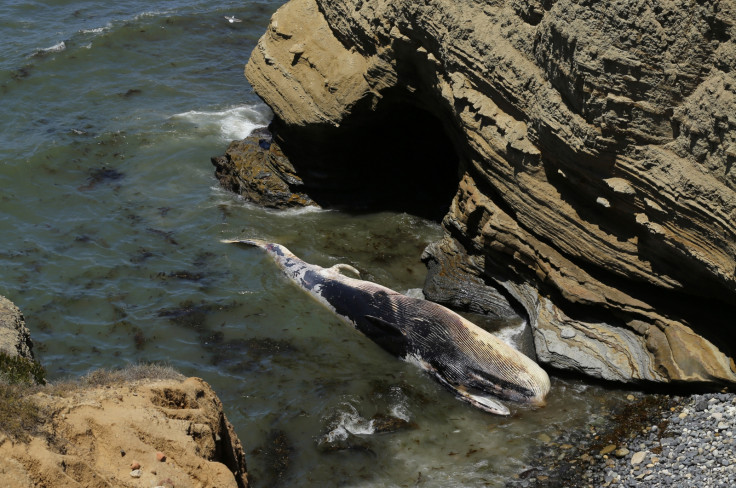Endangered fin whale remains wash up at Cornwall beach

The decomposed carcass of a 60ft whale found on Cornwall beach is suspected to be that of an endangered fin whale.
The detached jaw alone measured five metres.
Marine biologists are examining the remains of the mammal that washed up at Wanson Mouth beach near Widemouth Bay.
The state of decay has made it difficult to confirm its identity.
Fin whales are the second-largest species of whale after the blue whale and listed on the IUCNs' red list of threatened species.
With a maximum length of about 75 feet (22m) in the Northern Hemisphere, and 85 feet (26m) in the Southern Hemisphere, they have a distinct ridge along their back behind the dorsal fin, giving the nickname "razorback." The lower right jaw is bright white and the lower left jaw is black.
The fin whale has been severely impacted worldwide by commercial whaling, says the WWF. Nearly 750,000 animals were killed in areas of the Southern Hemisphere alone between 1904 and 1979.
Currently they are mostly seen in the North Atlantic.
Plastic debris could also end up harming whales and dolphins. Last year a young female sei whale, another endangered species, was killed by ingesting a broken piece of DVD case, writes Nature World News.
Sperm whales are particularly susceptible to plastic ingestion as they easily mistake debris for squid, their main food source.
A 37ft grey whale stranded near Seattle was found to have ingested more than 20 plastic bags, small towels, surgical gloves, a pair of sweatpants, duct tape and a golf ball.
Habitat loss, toxics and climate change have also affected the species. After a two-year break, Iceland resumed fin whaling in 2013 with a quota of 184 whales. Most of the meat is shipped to Japan.
© Copyright IBTimes 2025. All rights reserved.





















